BY MIKE METTLER — NOVEMBER 12, 2014
Bruce Hornsby could never be accused of being an artist who rests on his laurels. “I’m such a different musician in every way than I was 20 years ago,” he admits. Prime evidence of the master pianist’s ongoing creative evolution can be found all over the double-disc Solo Concerts (Vanguard), where Hornsby explores a variety of styles from behind the keyboard: everything from blues ’n’ boogie to New Orleans funk to the tenets of modern classical music. He also recasts the character of some of his best-known songs, such as turning “The Valley Road” into a blues vamp and giving “Mandolin Rain” an indelible bluegrass stamp.
Hornsby views playing a song the same way twice as akin to being in “a creative prison.” And, he feels, “if you’re a musician who’s interested in being a lifelong student who continues to grow and evolve, frankly, you’re generally going to want to move on from that.”
Here, Hornsby, 59, and I discuss how he “makes friends” with new pianos, when and when not to use reverb, and his philosophy behind making artistic choices onstage. Pushing the creative envelope — that’s just the way it is with Bruce Hornsby, and we hope it’s something that never changes.
Mike Mettler: From the audiophile perspective, Solo Concerts is an excellent-sounding recording.
Bruce Hornsby: Thank you. I’ll tell my engineer, Wayne Pooley. That’s great.
Mettler: These recordings were all taken from different locations, so you chose the best performances to include on the album, is that right?
Hornsby: That’s right. I’m not that good (MM laughs), so I had to painstakingly go through a number of concerts to discover and identify the exemplary performances. That’s how it works. I went through 40 or 50 shows, because I played a good number of solo concerts in 2011, 2012, and 2013. And it’s a great learning tool. I mean, I know the sound of me being terrible. When I hear that sound, I know I don’t want to make that sound anymore, so it’s educational for me on a performance level, both vocally and pianistically — and maybe on an arrangemental level as well. I’ll think, “You know, this goes on a little bit,” or “This is boring. I’m not being that interesting for a period of time here.” I could go on and on about it. Perhaps it’s too much navel-gazing, but you’re asking about the process.
Mettler: Well, I think your process is quite interesting. For someone who’s considered to be a master improviser, you know when you have your clams in there. The general listener may not be able to pick them out, so you have to be self-critical enough to say, “There’s something in the middle eight of this version of ‘Continents Drift’ that isn’t working for me, so let’s find a better one.”
Hornsby: Yes, that’s exactly right. But I do tend to give the “average” listener more credit than maybe some others do. I feel that this supposed average listener may not be able to tell you exactly what it is that’s not so good about what they’re listening to; they just know that it doesn’t “get” them. There’s something about it that’s not reaching them, and not getting them off. It’s like that old thing you hear people say: “Well, I just like good music.” (laughs) The naysayer might say that’s an idiotic statement, but I don’t think it is. I think what people mean by that is very simple: “I like music that moves me.” They might not know exactly why something doesn’t move them, but they might not have the time or the interest to analyze it. It either gets them, or it doesn’t.
I apply the very same, simple test to my music: Does it get me? And a lot of my critique will be on a vocal level. I want the vocal to have a certain soulful quality to it that reaches me and gets under my skin, whether it’s a funny song, or a soulful song. You mentioned “Continents Drift” — I want that to be a very soulful vocal. In the case of “Where’s the Bat,” I want that to evoke a more humorous response.
Mettler: On many of the album’s vocals, you employ an echo effect, but on “Continents Drift,” you come across more naked and raw, and I felt more emotional content in the way you were singing that song.
Hornsby: Well, that’s good. As you can probably see, since you’re an audiophile, different vocals are treated differently. It happens to be about the song, and how I’m reacting to it: Is this reaching me? Sometimes a drier vocal seems to be warranted; it seems to be the one that works and makes me like it. And another time, we’ll use a very slight slap effect, the slightest version of the effects you used to hear on old Elvis or Gene Vincent records. Now, you’d hear them on a Dwight Yoakam record —
Mettler: Or a Brian Setzer record —
Hornsby: Yes, absolutely. Slap, or basic plate reverb, or hall reverb. I’m lucky to be able to play many of the great concert halls. You’ll see in the picture that’s on the back cover of the record —
Mettler: Yeah, that’s in the Toronto hall you played [in November 2013] —
Hornsby: Yes, the Koerner Hall Royal Conservatory of Music. It’s just a beautiful hall with a beautiful sound. My drummer Sonny [Emory] and I were doing a duo tour, opening for Pat Metheny [i.e., the Pat Metheny Unity Group]. Another great hall is the New Jersey Performing Arts Center [in Newark].
Mettler: Oh, I agree; I love that space. I’ve seen Mark Knopfler play there, Bonnie Raitt, Marc Cohn — what a great venue. You played there when, back in August [specifically, August 8]?
Hornsby: Exactly right! And with Pat sitting in with us.
Mettler: How do you know a hall like that sounds good to you? What are the tells that let you know, “Ok, this is a good space for me. I’m going to have a good time here”?
Hornsby: It generally happens during soundcheck, once you get on stage. Especially on these duo tours, I have to make “friends” with a new instrument every night. There’s an amazing variety in the quality of instruments, but Steinways are always very solid. Some are stiffer than others and some feel like organs, but in a good way — real light, like a Horowitz piano was, with light action. Some are tough and stiff, some are dark and dull, and some pianos are really bright, so you have to watch it if you bang on them. I’m not much of a “banger” player at all. But if I get a dull piano in the left-hand bass-area register, I’ll tend to hit it harder. It doesn’t tend to get you much more bark out of the bass, but I have to save my hands for later in the set.
When I get to the soundcheck to make friends with this new instrument, within the first 5 minutes, I can tell whether I’m instantly comfortable, or if I’m really going to have to work for it. But that doesn’t mean that if I’m instantly comfortable, that gig is going to be better than one where I was thrown at first by whatever quality of the piano that was distasteful to me, or the sound of the hall.
I have monitors up there with me, but there are only two things that are in them: the vocal, and the reverb of the piano. Sometimes halls are real dry and I like to have a little sonic pillow there, which makes me feel better to play in that situation. So I’ll have my engineer Wayne [Pooley] dial in just the reverb of the piano, and not the piano itself.
Mettler: Have you ever had a case of finding a “friend” that’s not playable at all?
Hornsby: Sometimes, they don’t want to be friends — at least to me. (chuckles) But not that often. Not to be a shill for Steinway, but they make great quality, consistent pianos. But sometimes a concert hall rep will say, “Well, we have our own piano here, and it’s just great.” And then they’ll say, “Oh, it’s 50 or 60 years old, but it’s been renovated.” That’s always a red flag to me. They’ve been polishing it, but it’s still the same bit of excrement. (laughs)
But then there are other times, like at the end of 2012 when I was [at the FM Kirby Center] in Wilkes-Barre, Pennsylvania [on November 2, 2012], and I loved the piano there so much I had it shipped to New York to Steinway Hall [at 109 West 57th Street] so that the next time I went up there, I could go play it to see if I wanted to buy it. And I played it, and I bought it. It’s now in my studio. So that’ll happen too.
Mettler: You have it at home in Virginia now?
Hornsby: Yes I do. But if I bought all the pianos I loved playing on the road, I’d be broke. (MM laughs) I’m fortunate that I get to play a lot of great instruments.
Mettler: Plus, your wife probably wouldn’t let you have 100 pianos in the house, or on the property.
Hornsby: Yes. 100 pianos would be 900 feet of pianos, so —
Mettler: I think that’s the name of your next box set: 900 Feet of Pianos.
Hornsby: Kind of like that actor’s band, what’s his name, Russell Crowe — 30 Odd Foot of Grunts, so it would be 900 Foot of Piano. You could maybe only house that in a big WalMart.
Mettler: I try to rationalize a similar idea with all the vinyl I have around here at home. It’s “research.” I gotta have it all right here.
Hornsby: Well, if you’re writing for an audiophile magazine, then you can write it off.
Mettler: And I do! In terms of sound quality, how do you know when your mix sounds good? Was there a specific philosophy about how you wanted the Solo Concerts shows to be recorded?
Hornsby: We often A/B to other records, which I think is pretty common. If we’re making a certain kind of band record, we’ll A/B to something that we think is a sonic kindred spirit. For example, we A/B’ed the Solo Concerts record to a Keith Jarrett solo record. It’s interesting, because so many of them sound different to each other. They vary to me, sonically. Some are very dry, some are more reverberant, some are brighter than others. It’s just interesting. I generally like all of them.
There are certain piano sounds I like, but I tend to like a “round” sound. I don’t like it really bright. My first couple of records were big pop successes on radio, and they were really bright, so people sort of pegged that as “my” sound, where in reality, I didn’t like it at all. It sounded good on the radio. Somehow the radio compressors make “The Valley Road,” “The Way It Is,” and “Mandolin Rain” sound pretty good, but I’m not a fan of those records sonically. They sounded thin to me if you were listening to them in your house or your car.
I also A/B to some classical records that I love. There’s a great record of Ursula Oppens playing the Complete Piano Music of Elliot Carter. [Oppens Plays Carter: Elliott Carter at 100 — The Complete Piano Music, released in 2008 on Cedille Recods.]
Mettler: Ahh. There’s also a fine Elliott Carter piece on here [“Caténaires,” on Disc 1].
Hornsby: Yeah, that’s right. I regularly inflict that on my poor, unsuspecting audience. But I’m lucky to have an audience that includes a number of adventurous people who really are interested in hearing new things. I’m also lucky to have those people who want a stroll down memory lane, so since I’m sort of mean to them with all this dissonance, modernity, and chromaticism, I try to be kind to them and also play four or five of my really well-known older songs. I hope they recognize them. For instance, there are two on this record: “Mandolin Rain” —
Mettler: Right, done in your bluegrass style.
Hornsby: Well, it’s kind of folky, and in a minor key — it’s really a different song. The words are the same, but it has different chords and a different melody, though the arc of the melody is similar. And then there’s “The Valley Road,” which is a bluesy version, similar to but not exactly the version I used to play with The Grateful Dead in the 1990s.
Mettler: In the liner notes, you call it your Elmore James version.
Hornsby: Well, the way I’m singing it is sort of my half-assed attempt to channel the total bad-assedness of Elmo’ James. (chuckles)
I’ll also A/B to the Jeremy Denk records I love. I love them in every way. They’re right up there for me: his Ligeti/Beethoven (2012) and J.S. Bach – Goldberg Variations (2013) records. I’ll A/B to the Ligeti etudes, one of which [“Etude #5”] is on the album right before “Here We Are Again.” For me, it’s all about what moves you, so the records I A/B to are records I’m moved by — not only performance-wise, but sonically.
Mettler: On “Mandolin Rain,” what else are you playing on that track besides the piano?
Hornsby: It’s the MIDI attachment, the Bob Moog Piano Bar. It’s on a few of the songs here. So few people play acoustic instruments in the popular music world or even the jazz world. The Piano Bar has gone into obsolescence, but I, an old style/old time acoustic musician, like this sort of extra fuzz that the piano is MIDI’ed to — some ersatz string sound. (chuckles)
I don’t like to have it too loud. It’s also on “Continents Drift,” but generally, it’s on the ballads, like “Here We Are Again.” When I’m playing these ballads, I feel like I want to hear the orchestra playing with me. I have the orchestra in my head, and since I’m not playing stadiums and can’t afford an orchestra or hire an orchestrator for all of these songs, I need to do it this way to hear the sound of these songs that’s in my head.
Mettler: It’s a testament to the mixing that the MIDI doesn’t overtake the vocal or the piano itself. It’s a good supplement to the arrangement.
Hornsby: It’s a support sound, and that’s hopefully what it does. We worked really hard on this. If something’s out of place, then we’ve done a really terrible job. We have been really terrible at making records in the past. I have loads of regrets — not entire songs, but certain albums where I go, “Aww, man, I should have used that one.” And I’m not alone; I know lots of my singer/songwriter friends who tell the same story: “Dammit, this is a lot better song than the record of it is!” (chuckles)
Mettler: Most records are just a snapshot in time of the moment you recorded them. A lot of times, when you’re out there onstage, a song evolves quite literally at your fingertips.
Hornsby: That’s exactly right, and that’s my approach. And you bring up a good point. It’s such a creative prison if you have to play that snapshot, as you call it, every night for the rest of your life — because it is just a snapshot of the way you heard it in, say, 1992’s way. And hopefully if you’re a musician who’s interested in being a lifelong student who continues to grow and evolve, frankly, you’re generally going to want to move on from that.
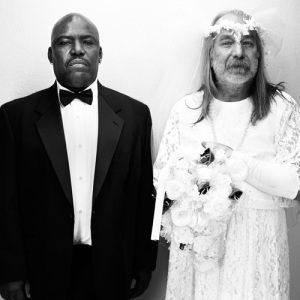
The Happy Couple: J.V. Collier (left) and John “J.T.” Thomas standing tall on the cover of Bride of the Noisemakers.
I’m such a different musician in every way than I was 20 years ago, and definitely 30 years ago when I was “popular.” It’s a whole different thing now. And this record may be the best version of that. And Bride of the Noisemakers, our live record from 2011, is a really good version of, when people ask, “What do you sound like?” Generally people say to me, “Oh, I’m such a big fan of yours! I love — ” and they’ll say one of the old songs. My standard answer is, “Thanks a lot, but you’ve missed the best part!” That’s just my feeling. Maybe some people would think I’m completely wrong, and I’ve gotten worse. But it’s clear on some levels that this album and Bride of the Noisemakers are good testaments.
In the last 3 years, when people have asked, “What should we get that shows us what you sound like now?” — I would say Bride. Also, I like to lead them to that record because it has that beautiful cover of my bass player [J.V. Collier] getting married to my keyboard player [John “JT” Thomas] in drag. (chuckles) Brave choices for them.
Mettler: Me, I like hearing how songs change over time. I happen to like the way songs like “The Valley Road” have evolved over the years because I don’t want to hear them exactly the way they were recorded. I can just put the original album on if I want to hear that. But not when it’s live.
Hornsby: I feel the same way. I wish there were more adventurous listeners like you are, but I don’t expect them to be. A lot of people don’t have the time to want to do that, and I don’t blame them a bit.
Mettler: To borrow a title, they want it the way it is — or rather, the way it was.
Hornsby: Yeah, that’s right, and I understand that.
Mettler: I guess that’s the two-way street as an artist: “I’m going to give you a little of what you came for, but you have to give me a little bit of what keeps me going.”
Hornsby: I’m going to give the songs to them in a way that I hope they recognize, but they’re very different from the originals. I’m not demanding they “allow” me to take the space — I’m just going to take the space. (laughs) Their choice, later, is whether they want to come back again. Fair enough. But I have to do this, because this is what moves me. I feel that what I owe my audience every night is the music I’m most passionate about. To be up there as their vehicle for a stroll down memory lane is just not for me. I couldn’t do that.
Mettler: You’d be cheating yourself.
Hornsby: And I’d be cheating the audience too, because I feel like what I want to do is going to be way more engaging for them. Of course, I always get nasty letters from people — and I just got a really good one. I was playing Chautauqua, [New York] with Sonny, opening for Pat [i.e., the Pat Metheny Unity Group at the Chautauqua Institution Amphitheater on August 1]. To me, it was a great gig. We went over great every night, bar none. But there was not one “hit” in that set — not one. After the gig, I went back to our tour bus, and our bus driver brings me this note that someone had put on Pat’s bus, thinking it was mine. The note said something close to this effect: “I (and many others) were very disappointed that you didn’t play your songs tonight. Sincerely, Betty,” or whatever. I just love it that she’s saying, “You didn’t play your songs.” Yeah, I did. Every song I played was one of my songs. I’m thinking to myself, “You just have this very narrow idea about what my songs are.”
If she had said this to me personally, I would have said, “Well, I’m sorry, Betty, but did you see the response to what we did? I’m sorry we didn’t give you your nostalgic night out, but did you see everybody else?”
Mettler: And your set was never presented beforehand as being anything other than what it was.
Hornsby: Oh no, no. It’s just piano and drums, and we just let it rip. We’re going to have a great time. I think people get a palpable sense of two guys just playing music in the moment and making it up as they go. I think it worked out great opening for Pat, because a lot of his audience is comprised of very adventurous listeners. They were ready to receive. They probably thought it was going to be something else, knowing my name but not necessarily having followed my path and my journey through the years. I know this is true, because I’ve gotten a lot of feedback to this effect — basically, people saying, “I had no idea.”
I’m all for teaming up with people, because I’ve been doing it for years. I like for other audiences to see what we’re doing, because generally they go, “I had no idea.” We played with Railroad Earth — a great, great group, a bluegrass jam band, and we had a great time touring with them. A year before that, Béla Fleck and the Flecktones and the Noisemakers toured together. And Bob Weir and I have done some solo shows together. I love the collaboration, and I also love playing for other people’s audiences.
Mettler: One other tech thing for you — on “Paperboy,” how did you get that vocal effect?
Hornsby: That was probably my mediocre attempt at trying to get an old John Lennon/Beatles kind of sound. I don’t know what you’d call it — it was basically one of the old effects they used to use on their records. It might be a whole lotta slap; it might be something else. Hopefully, it was reminiscent of that for you. That was what I was going for. For me, “Paperboy” is like The Beatles meets [composer Arnold] Schoenberg. It’s very chromatic — the melody, the piano melodies in the intro, and the bridge, where the right-hand melody becomes the bass pattern, which is fun on a compositional level. Vocally, the chorus is straight British pop — [sings:] “He looking for me / He’s looking for you…” That’s what we were trying to do.
Mettler: Well, I have one word for that: Success.
Hornsby: Oh good, that’s great to hear!
Mettler: Do you still like the LP format as a listener?
Hornsby: I’m all for it. I have a turntable in my library.
Mettler: What is it about vinyl that you like when listening to records?
Hornsby: I like the snap, crackle, and pop of it. (MM laughs) No, I don’t. Frankly, I just like the feel of records. Most of my favorite records that are not classical records are just old, nasty, gutbucket, funky-sounding Alan Lomax kind of records. It’s not about the quality at all.
Mettler: Well, there is a feel and legitimacy to records like that, and I like that too. What was the first record you ever bought that you can remember that had an impact on you?
Hornsby: Well, it’s funny. I was 8 or 9 years old. I went to my first concert at the football stadium at William & Mary here in Williamsburg, Virginia, where I grew up, and where I’ve lived for the past twentysomething years, after I moved back from L.A. in 1990. The first concert I saw was Peter, Paul & Mary. My parents took us all to see that, and the next day I went to Schmidt’s Florist and Record Store and bought their latest record, which was called A Song Will Rise (1965). And then I bought a Trini Lopez record, because he came on the Hootenanny show [Season 2, Episode 30, which aired April 25, 1964], and he also played William & Mary, so we went to see that. We heard Trini Lopez singing his ass off on “If I Had a Hammer” and “Lemon Tree,” so I went out and bought Trini Lopez. I guess I was a folkie early on.
Mettler: Last thing — your band is there with you now, and I understand you guys are recording a new album. Anything you can say about that?
Hornsby: This is a polar opposite of the Solo Concerts record. If you’ve seen us play live in the past 3 or 4 years, we have a section of our gig where we sit down and play acoustic, and I play dulcimer. We’re making a whole record of that music. Not that it’s all washboard; there are also drums and some pretty big, powerful rock songs on there, but they’re all dulcimer-based. I have my own idiosyncratic way of playing — I play the dulcimer like a guitar. It’s my own way of doing it, and I’ve been doing it that way for a while.
Mettler: Will this also be released under the Vanguard umbrella?
Hornsby: I don’t know. Who knows? I’m a free agent these days. I was 18 years with RCA, 5 years with Sony, and then in 2009, they all cut me loose and said, “Enough of old grandpa.” (MM laughs) I put out one record with Verve, two with Savoy, and the Solo Concerts with Vanguard. So who knows?
Mettler: I know — it can be on your own label, 900 Foot of Piano Records.
Hornsby: Yeah! (chuckles) 900 Odd Foot of Grunts. There you go.
Tags: Bruce Hornsby, CD, Elliot Carter, J.V. Collier, John "J.T." Thomas, LP, MIDI, Moog, Moog Piano Bar, Pat Metheny, piano, Solo Concerts, Sonny Emory, Steinway, The Noisemakers, The Way It Is, vinyl, Wayne Pooley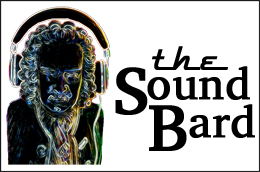
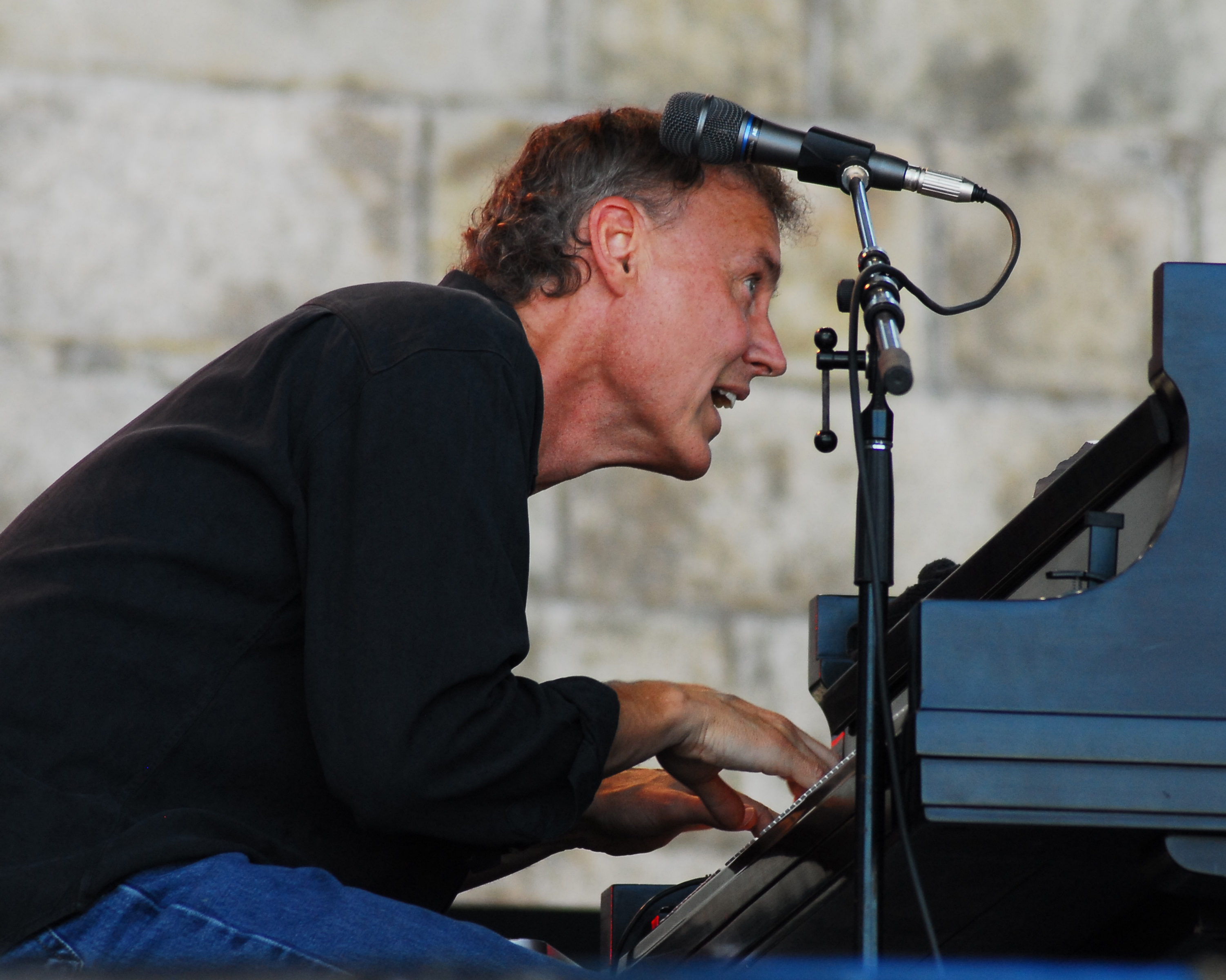
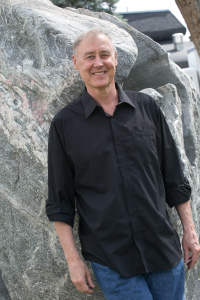
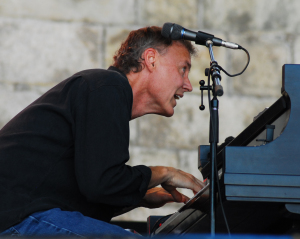
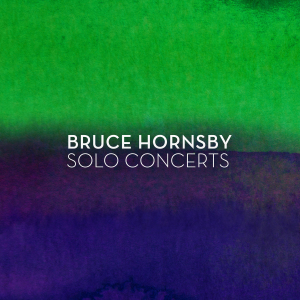
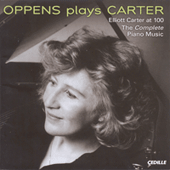
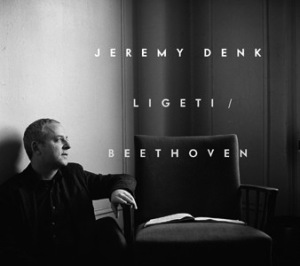

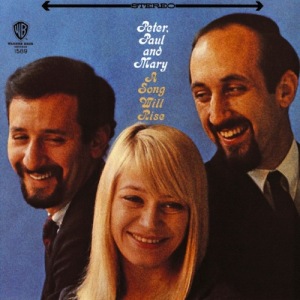
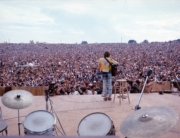
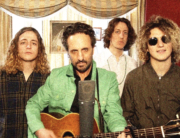
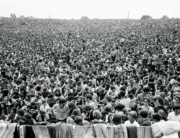
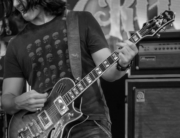
Mike – Fantastic interview. I’ve probably seen Bruce Hornsby in concert 15 times or so since1996. His fresh take on music keeps me coming back year after year. Thanks again…